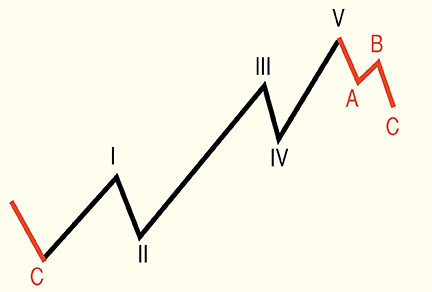CHARTING
Counting The Waves In The Wilderness
Elliott Wave Theory,
Simplified
Elliott wave counts can get complicated, but it doesn’t have to. Here’s a simplified look at how to study Elliott wave theory.
IN the late 1920s, Ralph Nelson Elliott came to the conclusion that the movement of the stock market could be predicted by identifying a repetitive pattern of waves. He theorized that movement in the market was the result of investors’ reaction to outside influences.
Over my years as a trader and investor in the stock market, I came to realize that the outside influences that Ralph Elliott believed moved the market was nothing other than emotion. In my 50 years as a pharmacist, I found that emotion played a tremendous part in the physical and mental health of a patient. I also found that health and emotion occurred in cycles more obvious in women than in men. Eventually, I determined that the gravitational attraction by the moon plays a real part in how a trader trades. After all, the gravitational pull creates the tides in the ocean. More than 80% of the human body consists of water. So even by a small degree, that same lunar gravitation must influence the movement of water, chemicals, and proteins within the human body, and in this way influence the emotions of a person, especially of a trader who lives high on the knife edge of emotion.
Ralph Elliott came to the conclusion that the market moves upward in five waves, and corrects in three waves. I first encountered the Elliott wave theory in 1969 and have been an avid follower and student since then. I have studied wave patterns but over the years have found that the complexity of the wave theory leads only to complexity in interpretation. Thus, I decided that simplicity was the answer, and so, the simpler the wave, the easier the interpretation. To achieve this simplification, I decided on the following set of rules.

FIGURE 1: the perfect simple wave count
The rules explained
1. The Elliott wave is a signpost in the wilderness, and must be regarded only as that.
The Elliott wave tells you where the market is going. Is the market in a three-wave bull market moving upward, or is it in a corrective phase downward? Are you trading in a bull market, or are you taking bets in a bear market? In a bull market, you know that for the long term the trend should be up, and whatever you buy, if the fundamentals of the stock are sound, you will score. In a bear market, you sell your holdings on the upward correction if you are a bull. If you are a bear, then you short and cover on the upward correction, taking a further short position into the final wave.